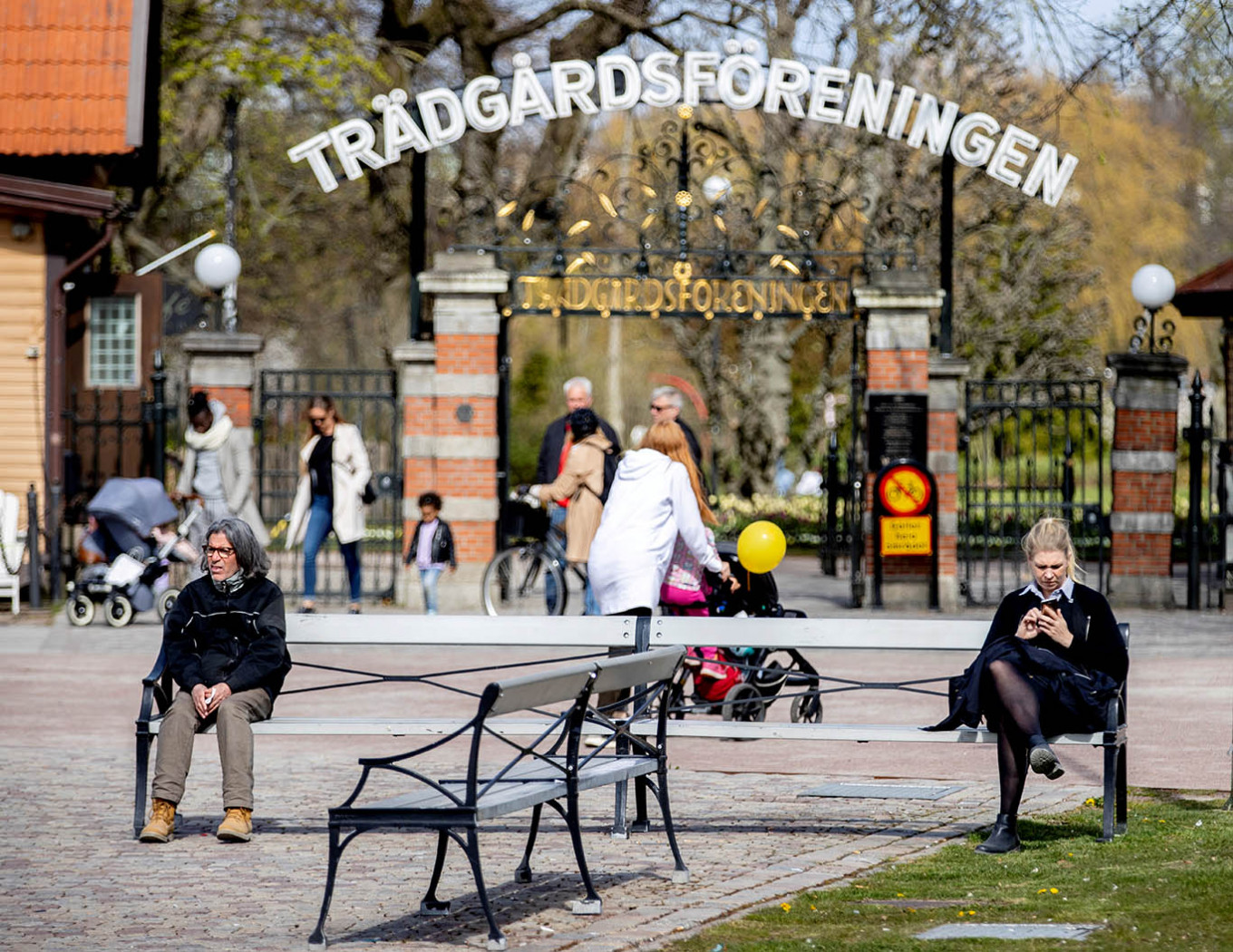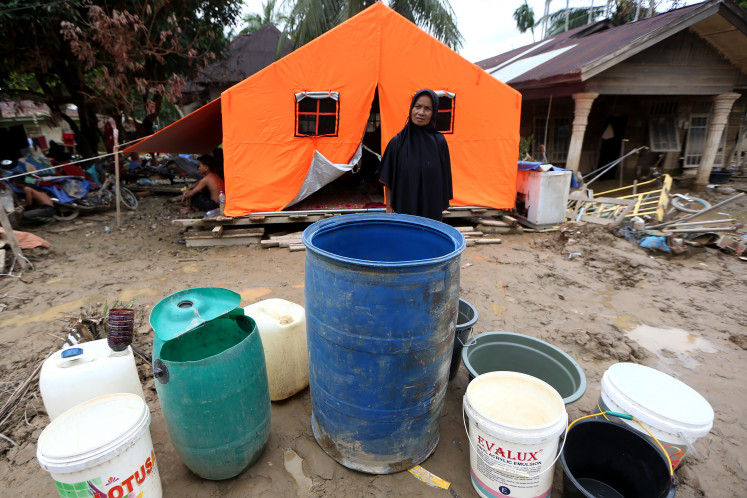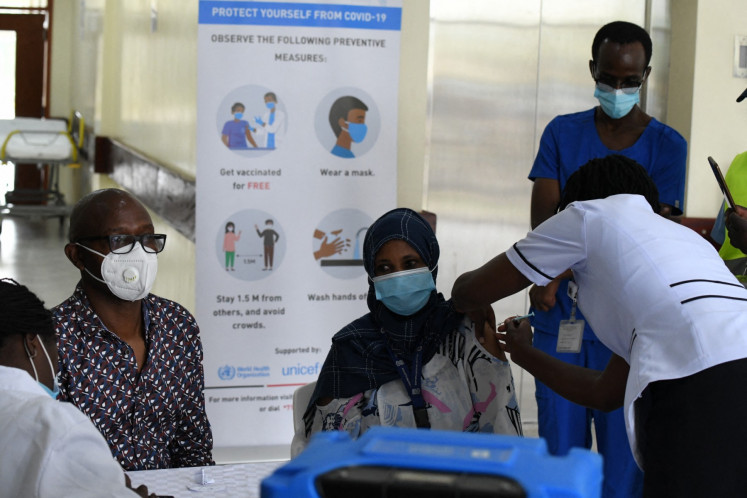Popular Reads
Top Results
Can't find what you're looking for?
View all search resultsPopular Reads
Top Results
Can't find what you're looking for?
View all search resultsLockdown vs. social distancing: Need for effective communication
Some of the experiences may be valuable to learn from. Denmark and Sweden might be a good example as both countries have some commonalities but approached the spread of the pandemic in different ways.
Change text size
Gift Premium Articles
to Anyone
C
ountries across the globe are still trying to cope with the spread of COVID-19. As of last week, the disease has spread to 212 countries, infecting about 4.3 million and causing the deaths of about 290,000 people.
To curb the further spread of the disease, countries have generally opted for social distancing or a lockdown — or both. Social distancing aims to break the transmission of the pandemic by restricting or closing all public places like cafes and malls. Lockdowns are a more stringent strategy entailing the complete stoppage of any sort of public movement except essential services. Some countries combine self-quarantine, isolation or curfews, among other measures.
Some of the experiences may be valuable to learn from. Denmark and Sweden might be a good example as both countries have some commonalities but approached the spread of the pandemic in different ways.
The capital cities share several similarities. About 27 percent of Stockholmers are immigrants of non-Swedish background. The largest foreign-born groups are Finns, Iraqis and Iranians. Likewise, just over 73 percent of the people of Copenhagen are of Danish origin. The immigrants mostly came from Pakistan, Turkey, Iraq and Poland.
Other variables such as gross domestic product (GDP) per capita, share of services sector to GDP, the ratio of debt per capita and human capital ranking are relatively comparable. The proportion of the elderly population at 20 percent is also identical.
Moreover, both countries are well represented on the Forbes Global 2000. While three of the largest Swedish companies might be well-known in Indonesia, namely Volvo (trucks), Ericsson and H&M, Denmark has Maersk, known as among the world’s largest shipping headquartered in Copenhagen, with subsidiaries and offices across 130 countries.
In terms of openness, both the Copenhagen Kastrup airport and the three Stockholm airports catered to the same number of passengers or about 30 million in 2019.
Nonetheless, the reaction to the pandemic has been very different in both countries. Denmark was one of the first countries in Europe to close its borders. From as early as March 13, authorities closed all schools, kindergartens and cafes and banned all gatherings of more than 10 people.
However, Denmark was also among the first European countries to gradually ease their lockdown. Shortly, Denmark will allow restaurants with terraces to reopen up to 30 percent of their capacity and hotels to accept bookings as long as they can maintain social distancing.
Sweden adopted more flexible ways of social distancing and herd immunity, which seeks to allow the spread of the virus to develop self-immunity among the population. Rules include no gatherings of more than 50 people and limited movement, especially for the elderly.
The economic outcomes also slightly favor Denmark more than Sweden. The Purchasing Managers' Index — showing the direction of economic trends in the manufacturing and service sectors — has been
slightly greater in Denmark during and after the relaxation of the lockdown. The financial sector is no different. Bloomberg reported that the fluctuation the OMX Copenhagen 20 Index was only 4.5 percent in the March-April period compared to 4.8 percent in Stockholm.
The lesson learned might not be straightforward for the developing world. Regardless of the policy measures being taken, they might impose an existential crisis on their livelihood. The urban spaces are crowded and a significant number of urban dwellers work in the informal sector.
Among the developing countries in Asia, Vietnam is currently on the plateauing stage, followed by Thailand. These countries successfully maintained social distancing while keeping the economic wheel running at a slow pace. Whereas, India, Pakistan and Bangladesh are still in the climbing stage with virtually no effective lockdown measures and now feeling the additional pressure to fully open up soon.
How did the more successful countries such as Vietnam and Thailand move toward the plateau first? The governments ensured effective and consistent communication that made it clear to residents that a hardship of a few days may help them win the fight and made them ready in case a newer and stronger strain of the virus hits them again.
These measures match with the 2009 arguments of Elaine Vaughan and Timothy Tinker, who said that life circumstances, cultural norms and perspectives of risk influence behaviors during a pandemic. Hence, the extent of a pandemic partly depends on the effective communication of health risks.
Indonesia needs to learn the importance of bold and consistent regulations to give clear guidance to the public at large. Lifting the restrictions before the country reaches measured targets might just delay the public’s health as well as economic recoveries. Consistent regulatory measures are mandatory as the current spread of the disease has reached smaller cities without prior exposure to the global pandemic.
***
Ibrahim K. Rohman earned his PhD from the Chalmers University of Technology, Sweden; Hasib Ahsan is taking a PhD program at the University of Copenhagen; and Moinul Zaber is a former post-doctoral researcher at the Chalmers University of Technology. The Indonesian version of the article appeared in Kontan daily.










